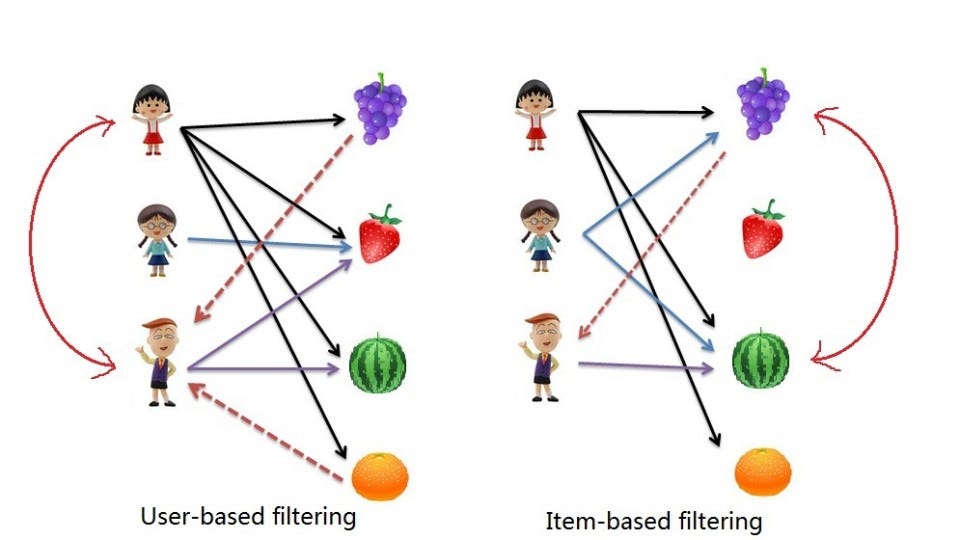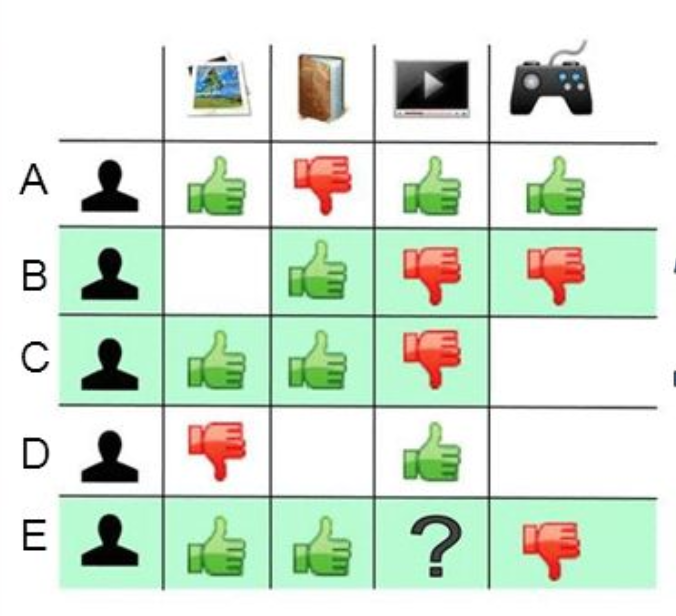
User-Based Collaborative Filtering (UB-CF)
Imagine that we want to recommend a movie to our friend Stanley. We could assume that similar people will have similar taste. Suppose that me and Stanley have seen the same movies, and we rated them all almost identically. But Stanley hasn’t seen ‘The Godfather: Part II’ and I did. If I love that movie, it sounds logical to think that he will too. With that, we have created an artificial rating based on our similarity.
Well, UB-CF uses that logic and recommends items by finding similar users to the active user (to whom we are trying to recommend a movie). A specific application of this is the user-based Nearest Neighbor algorithm. This algorithm needs two tasks:
1.Find the K-nearest neighbors (KNN) to the user a, using a similarity function w to measure the distance between each pair of users:

2.Predict the rating that user a will give to all items the k neighbors have consumed but a has not. We Look for the item j with the best predicted rating.
In other words, we are creating a User-Item Matrix, predicting the ratings on items the active user has not see, based on the other similar users. This technique is memory-based.

PROS:
- Easy to implement.
- Context independent.
- Compared to other techniques, such as content-based, it is more accurate.
CONS:
- Sparsity: The percentage of people who rate items is really low.
- Scalability: The more K neighbors we consider (under a certain threshold), the better my classification should be. Nevertheless, the more users there are in the system, the greater the cost of finding the nearest K neighbors will be.
- Cold-start: New users will have no to little information about them to be compared with other users.
- New item: Just like the last point, new items will lack of ratings to create a solid ranking.